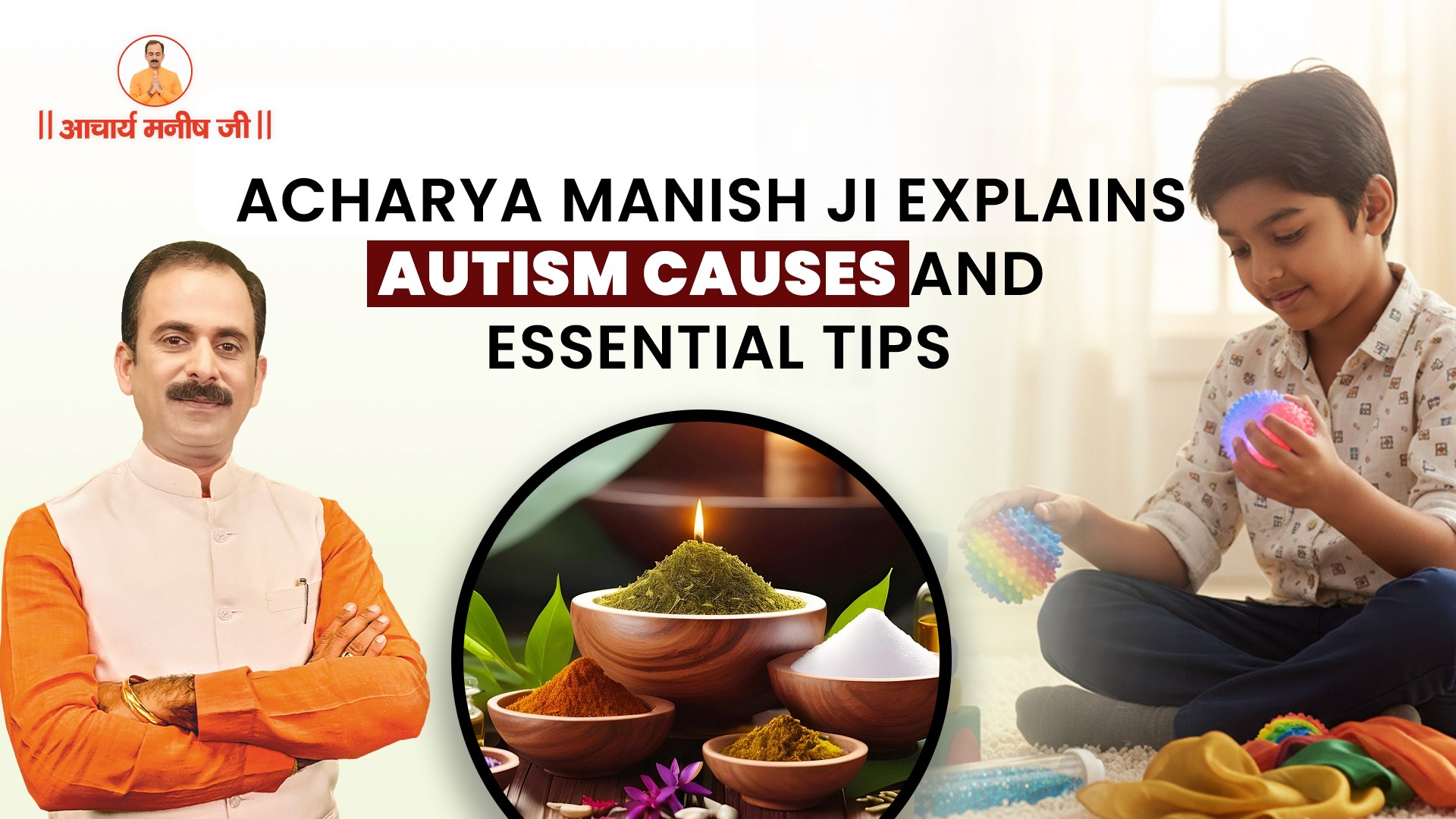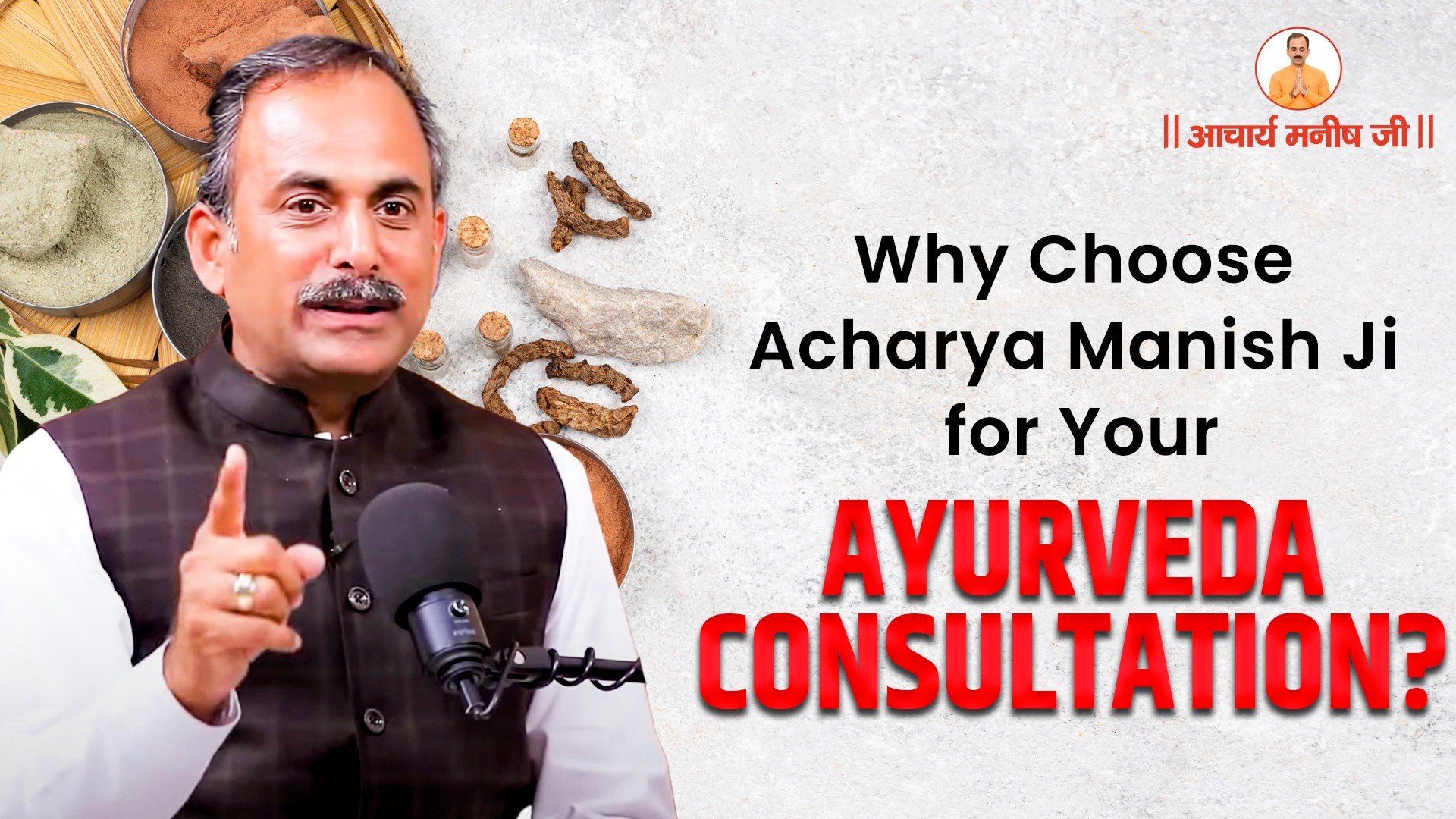Benefits of Ayurvedic Panchakarma Treatment by Acharya Manish Ji
When people hear the term Ayurvedic Panchakarma Treatment, many often imagine a simple wellness retreat—a relaxing oil massage, steam therapy, or a spa-like detox. While these are components of Panchakarma, this perception barely scratches the surface of its depth and purpose.
As explained by Acharya Manish Ji, a guiding voice in the revival of ancient Ayurvedic wisdom, Panchakarma is not a luxury; it is a disciplined science of internal cleansing and deep-rooted healing. He often quotes the Ayurvedic principle:
"आयुर्वेद का ना एक सूत्र है – सर्वेषां रोगाणां निदानं कुपितता मलं।
जितने भी रोग हैं, उनका एकमात्र समाधान है – बॉडी की सफाई।
जब शरीर से कुपित मल निकल जाए, रोग स्वतः शांत हो जाते हैं।"
This timeless insight reflects the essence of Ayurvedic Panchakarma Therapy, a method of detoxification that purifies every channel of the body.
According to him, when this toxic buildup is expelled, the body's natural healing intelligence reawakens. That’s where Ayurvedic Panchakarma Treatment plays a central role, not as a one-time therapy but as a transformative process that resets the body, mind, and energy.
In reality, Panchakarma isn't about pampering—it's about purification, discipline, and restoration. Through ancient therapies like Vaman, Virechan, Basti, Nasya, and Raktmokshan, the body is systematically cleansed of accumulated impurities. As a result, not only is the body refreshed, but mental clarity, emotional stability, and spiritual alignment also begin to unfold.
The Healing Power of Ayurvedic Panchakarma Treatment
In Ayurveda, cleansing is not just a physical necessity but a spiritual act. As Acharya Manish Ji often shares, Ayurvedic Panchakarma Treatment is one of the most time-tested methods to bring the body, mind, and consciousness back to balance. Through deep detoxification and nourishment, Panchakarma offers a complete rejuvenation experience that goes far beyond superficial wellness.
Why Detoxification Is Essential in Today’s Times
To cleanse the body and mind, Ayurvedic Panchakarma therapy is absolutely necessary. This powerful Panchakarma detox treatment eliminates impurities, restores internal balance, stabilises natural resilience, and reverses stress effects. It leads to profound relaxation, clarity, and a rejuvenated sense of well-being from within.
What is Panchakarma in Ayurveda?
The term "What is Panchakarma" in Ayurveda translates to “five actions.” These are the five core therapies designed to detox the entire system and balance the doshas: Vata, Pitta, and Kapha.
Acharya Manish Ji highlights the importance of pre- and post-care in these therapies to ensure a gentle yet deep internal reset.
Pre-Procedures (Purva Karma)
Before starting the core Ayurvedic Panchakarma Treatment, the body is prepared through:
Snehana (Oil Therapy): Application of herbal oils internally and externally to loosen toxins.
Swedana, or "sweating therapy", involves forcing toxins into the digestive tract through perspiration.
Main Panchakarma Therapies
Each therapy has a unique purpose in the Panchakarma detox treatment process:
1. Vaman (Therapeutic Emesis)
Used for removing excess Kapha through induced vomiting after oleation and heating.
2. Virechan (Purgation)
A way to use herbal laxatives to force Pitta toxins out of the small intestine.
3. Basti (Medicated Enema)
This treatment, which is regarded as the most significant, cleans the colon of Vata toxins using herbal oils and decoctions.
4. Nasya (Nasal Therapy)
A gentle cleansing of the nasal passages with herbal oils or powders is ideal for mental clarity and respiratory channels.
5. Raktamokshan (Bloodletting)
This technique helps to clear impurities from the blood, aiding skin and circulatory imbalances.
These five therapies, when guided by a qualified practitioner, form the foundation of ayurvedic panchakarma therapy.
Post-Care (Paschat Karma)
After cleansing, it is vital to nourish and protect the digestive system. Acharya Manish Ji stresses that after Panchakarma, the body becomes sensitive, and special care is needed.
Post-Therapy Diet Recommendations:
Avoid high-fat (greasy) foods as digestion remains delicate.
Focus on high-fibre, seasonal foods that are rich in natural nutrition.
Cooked vegetables, warm soups, and fruit-based preparations help in slow rebuilding.
The patient is also advised on dietary dos and don’ts in a detailed manner.
Supportive Therapies for Enhanced Effectiveness
Ayurvedic Panchakarma therapy is complemented by a range of treatments that target specific areas to enhance detoxification. Eye rejuvenation with Akshi Tarpan and ear nourishment with Karna Purana. Greeva Basti, Kati Basti, and Prishta Basti treat pain in the neck, back, and spine. Uro Basti and Hridaya Basti soothe the chest and heart, Nabhi Basti supports abdominal health, and treatments like Shirodhara, Shiro Pichu, and Shiro Basti calm the mind. Parishek (herbal decoction pouring), while Agnikarma offers heat therapy for pain relief. Joint health remedies like Janu Basti and Pichu help ease knee pain, while Uttar Basti purifies the reproductive and urinary channels. Full-body therapies such as Lepam, Patra Pottali Swedan, Nadi Swedan, and Shashtika Shali Swedan detoxify through herbal steam and poultices. Each therapy is personalised based on body constitution, ensuring a holistic and natural healing experience.
Acharya Manish Ji’s Words of Wisdom
Reconnect with nature and yourself under Ayurvedic guidance. His approach is rooted not just in Ayurveda’s ancient texts but also in practical, daily discipline.
Conclusion
Ayurvedic Panchakarma Treatment is more than a detox; it is a return to your most natural state. The body is purified, the mind is soothed, and the spirit is rebalanced through ayurvedic panchakarma therapy. With wisdom from Acharya Manish Ji and guidance from ancient science, we can live lighter, cleaner, and more in tune with nature. Whether it's through Vaman, Basti, or Nasya, each step is a journey back to harmony. Contact us for more information at: 82704-82704
FAQs:
Q: What is the recommended frequency of Panchakarma detoxification?
Ans. It depends on individual lifestyle and health, but traditionally it is advised once every 6–12 months under proper Ayurvedic supervision.
Q: What is Panchakarma in Ayurveda used for?
Ans. It is designed to restore doshic balance, remove toxins, and support mental clarity through natural therapies.
Q: Is ayurvedic panchakarma therapy suitable for everyone?
Ans. Each treatment is designed according to one's dosha balance and body constitution.
Acharya Manish invites you to join him on this journey towards holistic wellness. Embrace the ancient wisdom of Ayurveda and Naturopathy, and be a part of a global community committed to natural health and well-being.
Join the Movement
1.5k+ Already Subscribed




